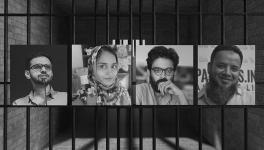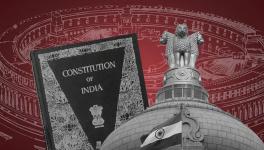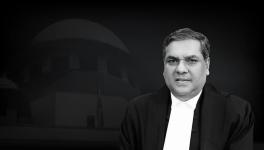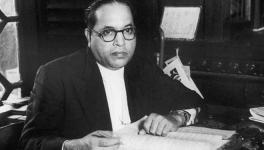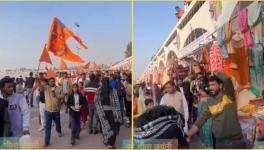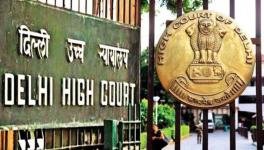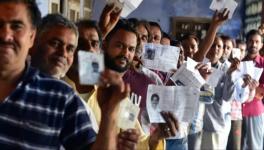Why Ensuring Dalit Human Rights is Still a Tough Task in the 21st Century
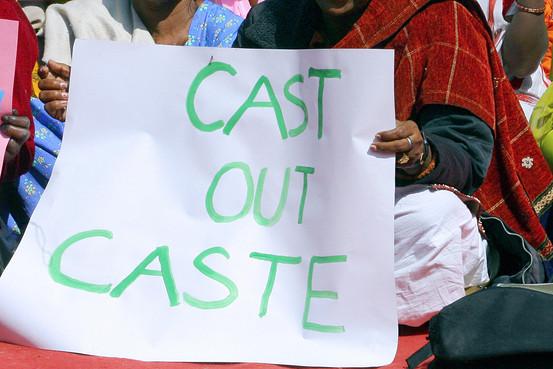
Representational image. | Image Courtesy: Wall Street Journal
"The Smallest Coffins are the Heaviest".
Sunped, a small village in Faridabad, Haryana, hit the national headlines recently once again, when a CBI court gave its verdict in case of the deaths of two Dalit children.
If memory does not fail you, one would recall that this village had witnessed the deaths of two children – two and a half year-old Vaibhav and ten-month-old Divya – who were burned alive and their parents Rekha and Jitender suffering burn injuries half a decade ago.
These deaths in a village which had a background of simmering conflict between dominant castes and Dalits, despite police protection provided to the ill-fated family, had caused tremendous uproar at the national level. Rallies and marches were held in different parts of the state and in the rest of India as well, demanding justice for the family. A callous statement by a Union Cabinet Minister about the incident where he argued that the government cannot be held responsible if “someone throws stones at a dog” had then added further fuel to the fire.
Perhaps to douse popular anger, the state government led by Manohar Lal Khattar had ordered a CBI enquiry into the case. It also took into custody eleven members of the dominant caste (namely Rajputs) from Sunped for their alleged involvement in these killings, based on a complaint by the victims.
The verdict by the CBI court in the case has landed the struggle for justice in this particular case into a black hole.
It acquitted all the accused in the case, differentiating between “mere suspicion” against the accused and “grave suspicion”. It is worth quoting what the single-judge bench of Judge Sushil Kumar Garg said: “..mere suspicion against the aforesaid accused persons is not sufficient to proceed against them as distinguished from grave suspicion."
The acquittal was a foregone conclusion because in its investigation the CBI had filed a closure report in 2019 itself, claiming that the statements by the victims were confusing. This closure was an indirect endorsement of what the accused had claimed, that they were framed.
The complainants had immediately filed a petition against this closure and had alleged that investigating agency was “neither active nor careful” in collecting evidence in the case and did not record the statements of witnesses correctly.
At this juncture one cannot gloss over the fact that it had taken too long for the investigating agency to file its report, a fact which had already come under the scanner of human rights activists and journalists.
The state government has not yet formally replied to this and has not yet challenged it in a higher court. It would be the matter of a separate study whether the CBI could lay its hands on the many gaps in the entire episode or not.
Whether it probed events on that fateful night when the tragedy occurred – how four of the six policemen who were guarding the Dalit family from reprisal by the dominant caste had absented themselves inadvertently – or how the remaining two were not to be seen near the house when the incident occurred? How did it look at this strange 'coincidence' and that the house caught fire during the same period, and whether it was by design or not ?
Whether it tried to analyse the sluggish response of the local police, which even failed to file a charge sheet against the accused within the stipulated time which led to them being released on bail within three months, despite the fact that provisions of the important Scheduled Caste and Scheduled Tribe (Prevention of Atrocities) Act, 1989, were invoked in the case.
Key provisions of the Act have been highlighted again and again, which even empowers the machinery to declare the area/region 'atrocity prone'; it can impose a collective fine on them for aiding and abetting violence, or that even government officials can be booked under Section 4 of the Act for their willful negligence in the particular case.
One can only imagine what the psychological impact on the accused getting bail in this case must have had on the morale of the Dalits?
Close watchers of the human rights situation in Haryana would vouch that the way things unfolded in Sunped was no exception. In fact, over the last two decades and more the state has been always in the news for growing atrocities against Dalits and other marginalised sections of society and an insurmountable battle for justice.
Be it the case from Dulina in Jhajjar, where five Dalits were lynched for the 'crime' of carrying the corpse of a dead cow in the presence of police and other government officials, where the first cases filed by the police were against the dead Dalits, or the manner in which Dalits from Harsoula in Kaithal were forced to leave their village by those from the dominant caste, for their growing assertion. There was also the case of the burning of hundreds of Dalit houses in Gohana in Sonepat, supposedly to avenge the death of a Jat boy in a scuffle with other boys, or the gruesome attack on Dalits in Mirchpur where a 17-year-old Dalit girl and her 60-year-old father and the subsequent looting and arson of their houses. One can keep a count of the number of incidents where perpetrators keep evading the law, all thanks to the active or tacit connivance of law enforcement authorities.
There is no doubt there are occasional victories, like the way the Delhi High Court convicted 33 accused in the case of Dalit killings in Mirchpur. Condemning the "planned attack" by the Jat community against the Valmikis during the incident which had led to the displacement of 254 families from the village, it not only upheld the conviction of 13 people who were held guilty by the trial court, but also convicted 20 more accused who were previously acquitted by the trial court.
As an aside it needs mentioning that this author has had the personal experience of visiting a few such places or joining in efforts to bring out the truth before the wider populace as part of fact-finding teams of civil liberty activists and writers.
One still remembers vividly what the Dalits in Harsoula had told the Delhi media when a press conference was organised for them, or how the charge sheet filed by the CBI which was asked to look into the attack and arson in Gohana, had clearly exhibited biases and diluted the complete case by making a mischievous claim: "... some people in Valmiki Basti had set their houses on fire themselves, allegedly for compensation." It finally led to the acquittal of all the accused in the case.
The debatable claim, lapped up by the media, had completely overshadowed the fact that Dalit houses in three adjoining localities which numbered more than a thousand were singled out by the arsonists and that police officials who were commanding more than two hundred police personnel remained glued to the main chauraha in the town – Jagjivan Chowk – and later patted themselves on the back for not spilling blood onto the streets.
It is worth recalling what Dalit residents of Pabnava in Kaithal had told a fact-finding team about the organised attack on their basti in the intervening night of April 13 and 14, 2013, by the local landowning community, who were armed with spears, batons and other sharp edged weapons. They had allegedly attacked the basti and ransacked more than 200 houses and left six Dalits injured. It was supposedly to avenge the 'dishonour' wrought on them by a Dalit youth who had dared to marry one of “their girls”. Muzadpur, a village in Hisar district witnessed a Dalit atrocity, albeit of a less ‘fatal’ nature, after the Sunped incident. Here, members of the dominant Jat community had thrashed Ramdhari and his family members and stuffed cow dung inside his mouth. Reports mention that the upper caste Jats felt provoked that Ramdhari had installed a statue of Ambedkar in his house.
It was not reported whether in an area dominated by the upper caste, Ramdhari’s perpetrators were arrested under specific provisions of the Prevention of Atrocities Act or not ?
How does one explain such Dalit atrocities of a varied nature in a state which looks prosperous vis-a-vis many other states?
Atrocities on Dalits in Haryana are explained as an outcome of a society which perpetuates material deprivation of a large section of Dalits, and the structural asymmetries inherent in the system. An added explanation which is also offered underlines the fact that the region does not have a strong tradition of anti-caste movements or a struggle for the empowerment of women..
But it is not a satisfactory explanation.
States like Tamil Nadu and Maharashtra, which have long and vibrant tradition of anti-caste and women's movements, also witness atrocities on Dalits in various measures.
Sunped in Haryana and Natham in Tamil Nadu, separated from each other by hundreds of kilometers, populated by communities speaking different languages and cultures, find themselves connected because of this 'Unity in Diversity' of a different kind; being witness to atrocities on Dalits in very many ways.
Perhaps what the Delhi High Court had observed in the famous case of Dalit atrocities at Mirchpur still rings true at the national level; it had emphasised how even 73 years after Independence, instances of atrocities against Dalits by dominant castes have shown no sign of abating. It underlined the fact that such incidents serve as yet another grim reminder of "the complete absence of two things in Indian society" as noted by Dr. B.R. Ambedkar when he tabled the final draft of the Constitution of India before the Constituent Assembly on November 25, 1949. “One was 'equality' and the other, fraternity".
Is anybody listening?
The author is a freelance journalist. The views are personal
Get the latest reports & analysis with people's perspective on Protests, movements & deep analytical videos, discussions of the current affairs in your Telegram app. Subscribe to NewsClick's Telegram channel & get Real-Time updates on stories, as they get published on our website.










